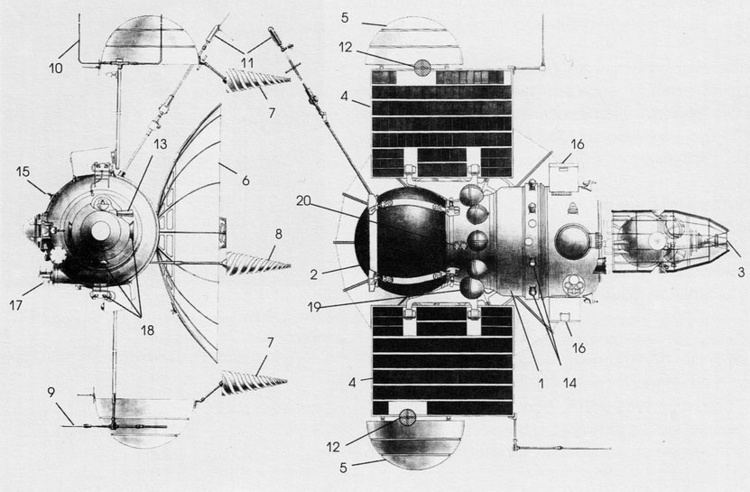SATCAT no. 04501 Period 1.6 hours Inclination 51.5° Start date August 22, 1970 | COSPAR ID 1970-065A Mission duration Launch failure Apogee 910,000 m Launch mass 1,180 kg | |
 | ||
Kosmos 359 was an unmanned Soviet probe launched on 22 August 1970. The probe's intended purpose was to explore Venus, but an error caused the final-stage rocket to malfunction. Leading the craft to become trapped in an elliptical orbit around Earth. The probe remained in orbit around Earth for 410 days before its orbit decayed and it reentered the atmosphere. Kosmos 359 was launched five days after Venera 7 and had an identical design. If the craft didn't suffer a mission-ending failure it would have landed on Venus shortly after Venera 7. To publicly acknowledge the failure of the attempted Venus lander would be a public relations disaster for the Soviet Space Program. After mission failure the Venera spacecraft was renamed Kosmos 359 in order to hide the failure from the public.
Contents
Rocket Malfunction
After reaching orbit, the main upper stage engine ignited late and shut down early after running for only twenty-five seconds. The error was ultimately attributed to an error in the DC transformer of the power supply system.
Experiments
Kosmos 359 carried a wide array of scientific instruments, including a solar wind detector, cosmic-ray detector, resistance thermometer, and aneroid barometer.
